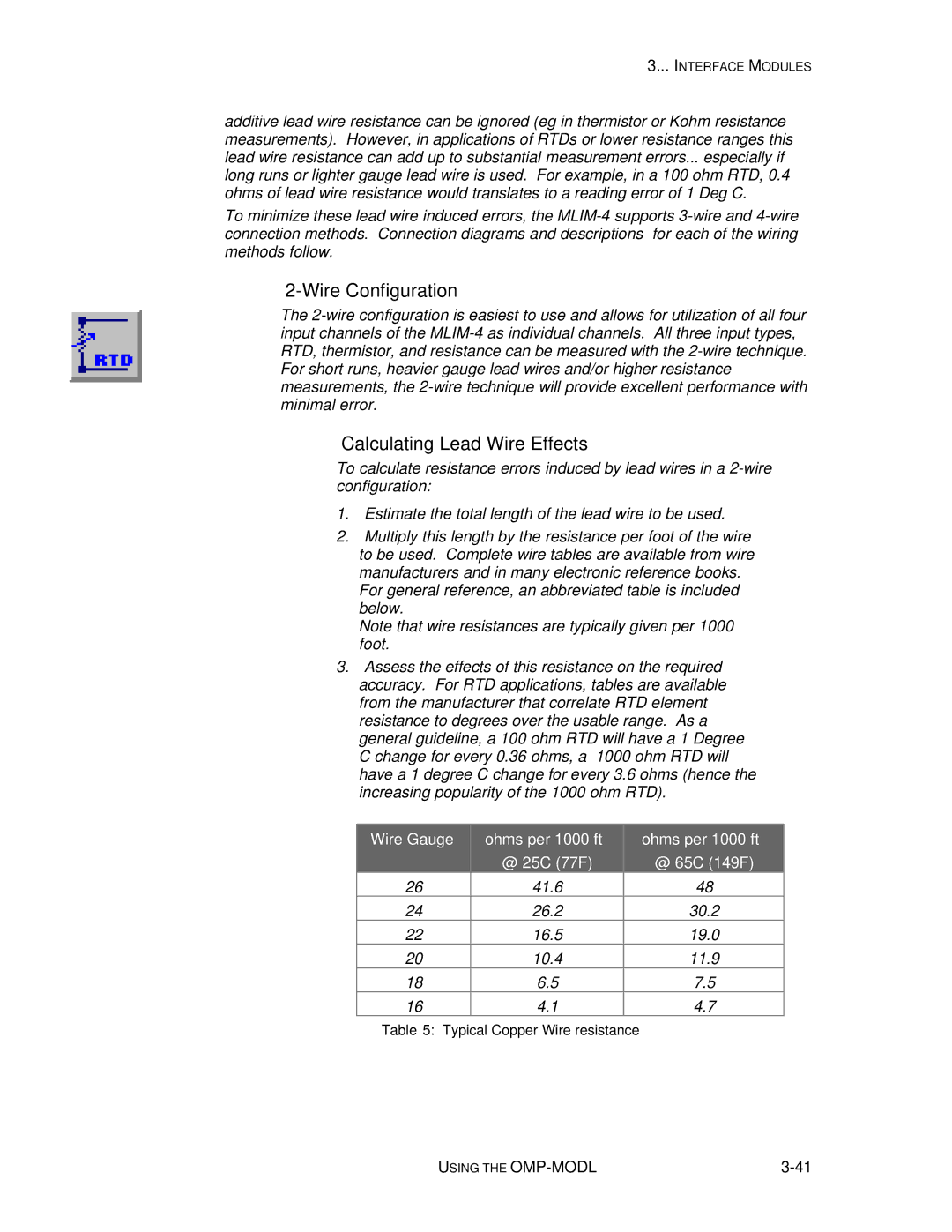
3... INTERFACE MODULES
additive lead wire resistance can be ignored (eg in thermistor or Kohm resistance measurements). However, in applications of RTDs or lower resistance ranges this lead wire resistance can add up to substantial measurement errors... especially if long runs or lighter gauge lead wire is used. For example, in a 100 ohm RTD, 0.4 ohms of lead wire resistance would translates to a reading error of 1 Deg C.
To minimize these lead wire induced errors, the
2-Wire Configuration
The
Calculating Lead Wire Effects
To calculate resistance errors induced by lead wires in a
1.Estimate the total length of the lead wire to be used.
2.Multiply this length by the resistance per foot of the wire to be used. Complete wire tables are available from wire manufacturers and in many electronic reference books.
For general reference, an abbreviated table is included below.
Note that wire resistances are typically given per 1000 foot.
3.Assess the effects of this resistance on the required accuracy. For RTD applications, tables are available from the manufacturer that correlate RTD element resistance to degrees over the usable range. As a general guideline, a 100 ohm RTD will have a 1 Degree C change for every 0.36 ohms, a 1000 ohm RTD will have a 1 degree C change for every 3.6 ohms (hence the increasing popularity of the 1000 ohm RTD).
Wire Gauge | ohms per 1000 ft | ohms per 1000 ft |
| @ 25C (77F) | @ 65C (149F) |
26 | 41.6 | 48 |
24 | 26.2 | 30.2 |
22 | 16.5 | 19.0 |
20 | 10.4 | 11.9 |
18 | 6.5 | 7.5 |
16 | 4.1 | 4.7 |
Table 5: Typical Copper Wire resistance
USING THE |
